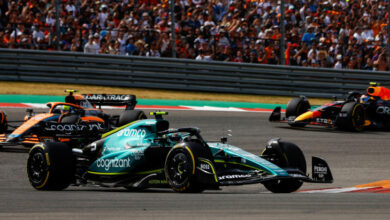Toyota’s Hydrogen-Powered Sports Cars: A Glimpse into the Future of Combustion Engines
Toyota's FT-Se concept offers hope for the future of internal combustion engines with hydrogen power.
In the ever-evolving world of automotive technology, Toyota has presented a promising solution for petrolheads concerned about the future of sports cars powered by internal combustion engines. The company’s FT-Se concept not only offers a glimpse into Toyota’s electric performance future but also signifies that the venerable internal combustion engine is not yet on its way out.
Key Takeaways:
- Hope for Combustion Engines: Toyota’s FT-Se concept showcases a potential future where internal combustion engines can thrive, thanks to hydrogen power.
- Challenges Remain: Toyota’s GR manager, Watanabe, acknowledges the current inadequacy of hydrogen fuel cell car charging infrastructure, hindering the immediate adoption of hydrogen-fueled combustion cars.
- Optimism for the Future: Despite current challenges, Toyota remains optimistic about the possibility of hydrogen gaining traction in Europe, the United States, and Japan in the coming years.
Watanabe, the GR manager at Toyota, candidly admitted the significant obstacle in their path, stating, “The existing charging infrastructure for hydrogen fuel cell cars, like the Mirai, is inadequate.” This acknowledgment reflects the practical challenges that hydrogen-powered combustion cars face at the moment. However, his optimism about the future of hydrogen in major automotive markets is unwavering.
As per Masahito Watanabe, Gazoo Racing manager, the ultimate goal isn’t limited to an all-battery lineup, as achieving zero emissions can also be realized through Hydrogen technology. Notably, the GR Yaris and GR Corolla have already undergone conversions into hydrogen-fueled race cars, all while preserving their turbocharged three-cylinder engines. Watanabe emphasized:
“We still think the internal combustion engine has some potential and, as we do so, we will of course be trying to comply with all the applicable rules according to the regions in each country. But we don’t want to give up. It’s not over just yet, because if you look at the internal combustion engine, there’s still hydrogen combustion that can be a part of that zero-emission lineup, so I think that’s going to continue.”
While the FT-Se concept does offer hope for sports cars with internal combustion engines, it also serves as a reminder that the automotive industry continues to explore alternative power sources. Hydrogen is one such option, and Toyota’s commitment to it suggests that the internal combustion engine may not fade away as quickly as some had feared.
In conclusion, Toyota’s FT-Se concept provides a promising glimpse into the future of sports cars powered by internal combustion engines, with hydrogen as a potential savior. Despite the current challenges posed by inadequate charging infrastructure, Toyota’s optimism about the future of hydrogen suggests that combustion engines may have more staying power than anticipated.
Toyota’s FT-Se concept offers hope for the future of internal combustion engines with hydrogen power, despite challenges in the charging infrastructure.
For SEO optimization, the key focus should be on keywords related to Toyota’s hydrogen-powered sports cars, the FT-Se concept, and the future of combustion engines. Here are some potential SEO keywords and phrases to include in your article:
- Toyota hydrogen-powered sports cars
- FT-Se concept
- Combustion engines and hydrogen
- Hydrogen fuel cell cars
- Toyota GR manager’s perspective
- Inadequate hydrogen charging infrastructure
- Future of hydrogen power in automotive industry
- Combustion engines’ viability
- Alternative power sources for sports cars
- Toyota’s commitment to hydrogen technology
By incorporating these keywords naturally throughout the article, you can improve its SEO performance and visibility on search engines.


